Introduction
The measures for implementation considered in this article can be understood to fall under the category of
resilience, defined as the
capacity of society or ecosystems to
adapt to the risks to which they may be subjected.
Adaptation to flood risk is considered to be the range of actions aimed at reducing the vulnerability of property elements exposed to flood risk so as to lessen the impact and the adverse repercussions of flooding. These elements include, for example, buildings, facilities, and infrastructures.
All the government bodies involved need to promote a series of measures to raise awareness of the unavoidable connection between the occurrence of extreme weather phenomena and the need for self-protection, namely, measures taken to supplement traditional structural measures which, though they may mitigate the consequences, are incapable of ensuring zero risk.
Flood risk management plans are the basic tool used by the Directive on the assessment and management of flood risks, which provides the framework for coordinated action by all government bodies and society to implement the actions set out below.
Actions taken by the Directorate General for Water
In recent years, the Directorate General for Water of the Ministry for the Ecological Transition and the Demographic Challenge [
Ministerio para la Transición Ecológica y el Reto Demográfico] has put its efforts into promoting measures of this kind in the framework of those flood risk management plans, working to achieve a series of primary objectives that include:
- Improving administrative coordination between all players involved in risk management.
- Enhancing resilience and decreasing vulnerability of property located in flood-prone zones.
- Increasing awareness of flood risk and self-protection strategies among the citizenry, social partners, and economic agents.
- Helping to improve spatial planning and exposure management in flood-prone zones to make cities more resilient.
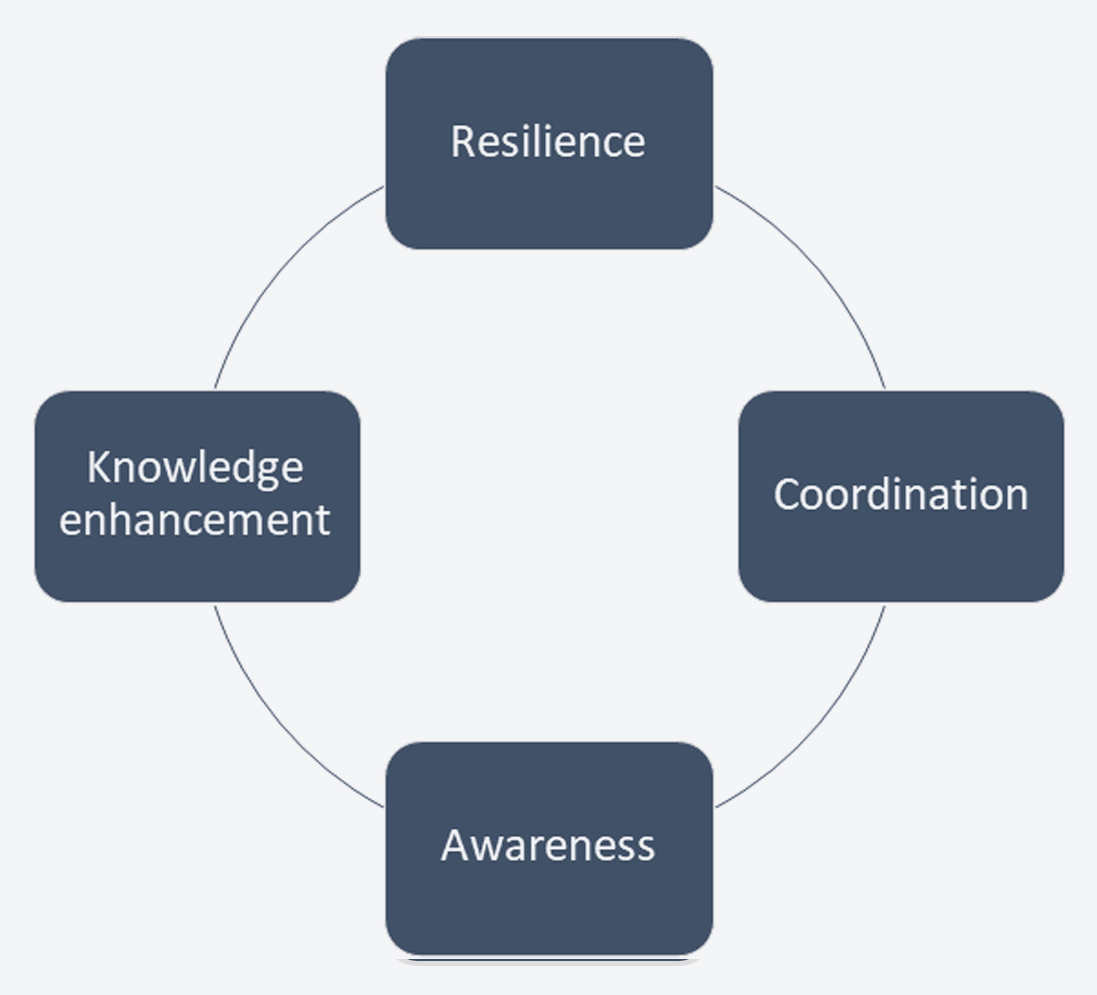
First steps
As a starting point in this context, in 2017 the DG for Water released its
"Guía para la Reducción de la Vulnerabilidad de Edificios frente a Inundaciones" ["
Guide to Reducing Vulnerability of Buildings to Floods"] in cooperation with the Consorcio de Compensación de Seguros (CCS). The Guide's main objective was to advise the various building owners, users, and managers, from a practical perspective, on how to reduce risk by recommending guidelines and solutions they could follow to mitigate the damage caused by flooding.
In addition, the guides listed below were also issued in view of the need to provide guidelines tailored to the different types of facilities, services, and goods in the different economic sectors:
"Evaluación de la resiliencia de los núcleos urbanos frente al riesgo de inundación: redes, sistemas urbanos y otras infraestructuras (2019)" ["
Assessing resilience of urban centres to flooding: networks, urban systems, and other infrastructure (2019)"]: This guide was aimed at ascertaining the direct and indirect damage floods may cause to a city and its environs to enhance the resilience of cities and all their services (electric power, communications, utilities, supply, sewage systems).
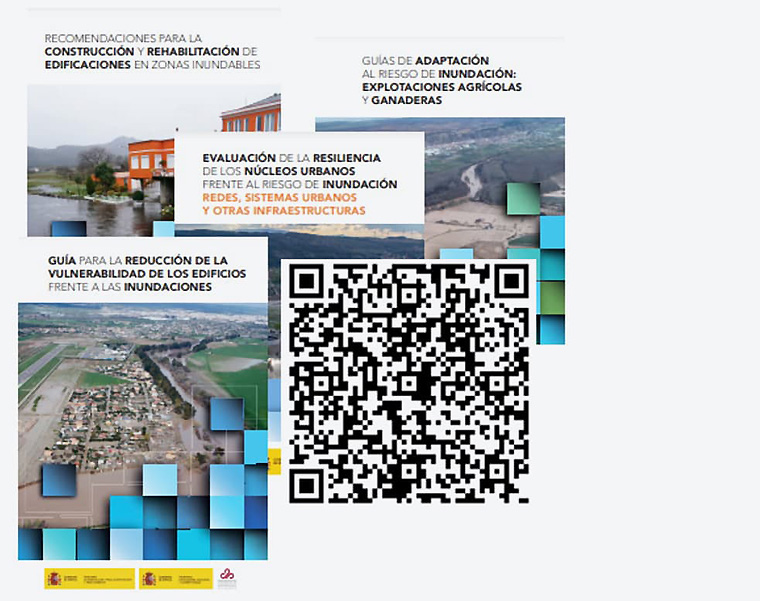
Implementation. Initial pilot cases of adaptation
The first pilot cases of adaptation to flood risk were carried out in 2019 and 2020 to put the guides into practice. They were spread all around Spain and included a range of different types and uses.
Following the methods set out in the guides, they all started by assessing the problems associated with their flood risk and building considerations and then went on to put forward proposals based on four strategic courses of action:
preventing water from reaching the building;
resisting the entry of water once it had reached the outside of the building;
withstanding incoming water to enter while taking steps to minimise damage; and even
abandoning use when the risk was too high. The different alternatives were considered and the economic value of the damage that the structure and contents would no longer suffer was estimated, together with the cost of the steps to be taken, to obtain a benefit-cost ratio indicative of the feasibility of taking action from a financial standpoint.
The pilot cases had highly favourable benefit-cost ratios and showed that small investments executed in a short span of time could greatly mitigate the risk and reduce the cost of future damage that might occur due to flooding.
Work in progress
To continue this work and expand the methods employed to other economic sectors, the Directorate for Water issued tenders for a Service Contract for a "PLAN PIMA ADAPTA. Desarrollo de Programas Piloto de Adaptación al Riesgo de Inundación y de Fomento de la Consciencia del Riesgo de Inundación en diversos sectores económicos" ["PIMA ADAPTATION PLAN. Developing Pilot Programmes for Adapting to Flood Risk and Raising Flood Risk Awareness in various economic sectors"], which started in 2020. They were split into three categories to assess the farming and livestock breeding, industry and infrastructure, and urban facilities and buildings.
The general objectives were:
- Further developing the technical content of the guidelines for adapting to flood risk.
- Identifying and training the players involved and promoting risk culture.
- Improving our understanding of the mechanisms exerted by floods when causing damage to the different types of buildings and potential measures.
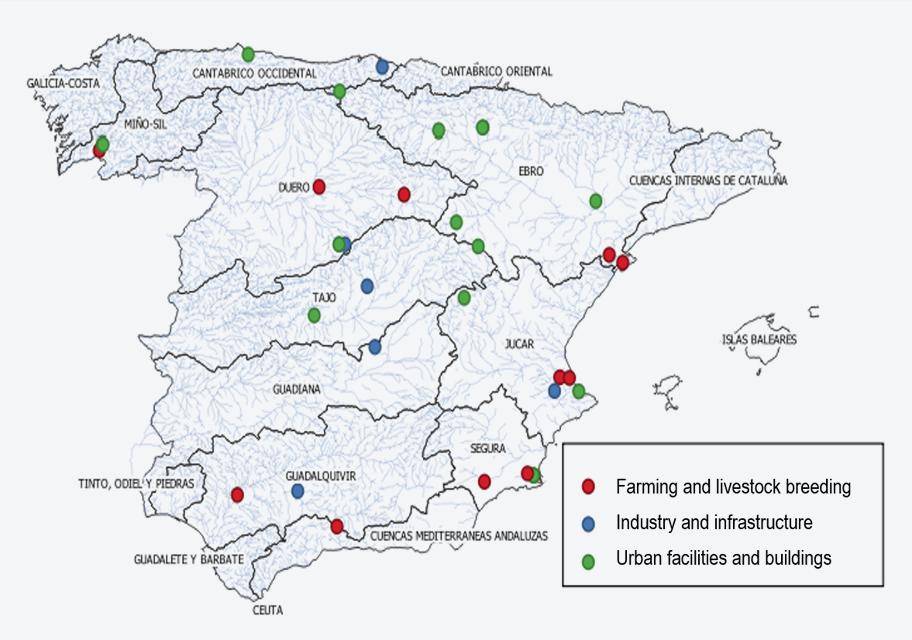
Figure 1. Pilot cases in progress by economic sector.
The activities undertaken included identifying the main risk and damage components occurring in the economic sectors considered for each category, to expand our knowledge for assessing the impact of flooding on each; performing 75 assessments on various types of structures that were used to draw up 30 preliminary adaptation designs suitable for specifying in detail the measures intended to decrease the vulnerability of the different property elements at risk or under study; for each type considered, determining the water level to expected damage ratio for a flood event to provide as much information as possible for use in risk management.
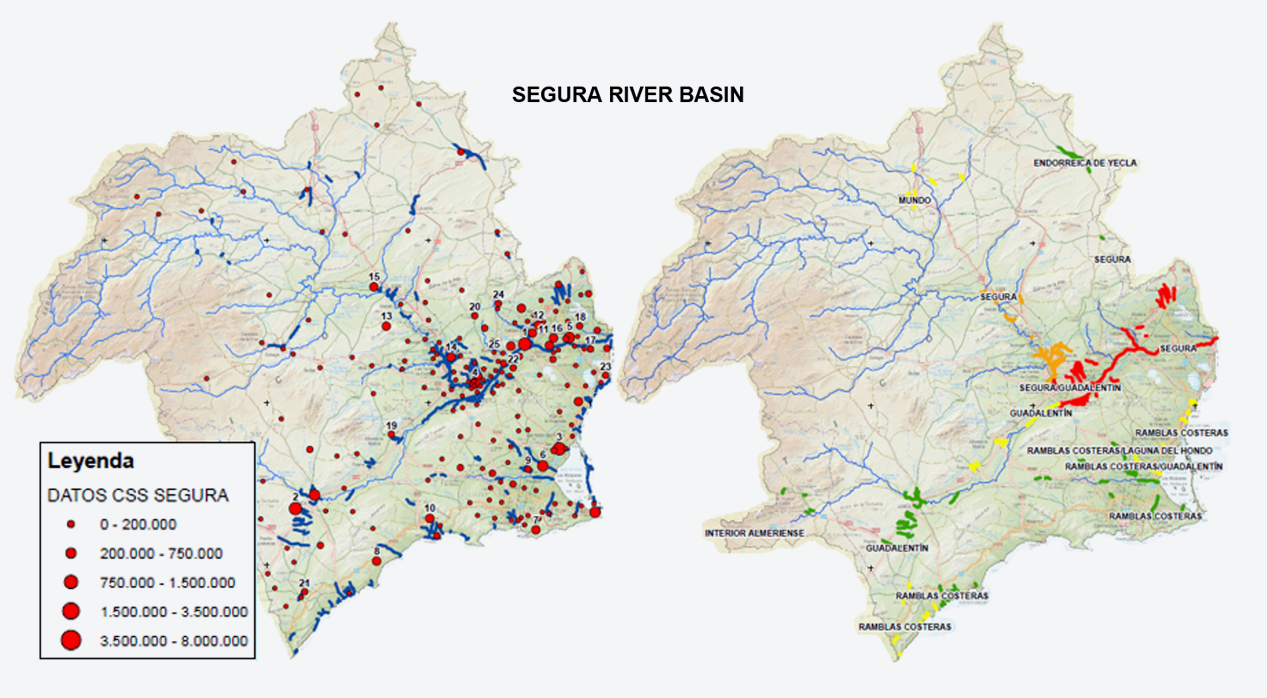
Figure 2. Assessment of the impact of flooding on industry and infrastructure. Comparison of indemnities paid out by the CCS (2005-2019) and definition of areas with significant potential flood risk (ARPSIS) based on data from the risk maps for the Segura River Basin District.
Training courses on flood risk and dissemination of educational materials to the citizens and to economic agents and social partners is intended to raise the public's risk awareness and perception.
Proactive measures: the Campo de Cartagena initiative
Providing subsidies for adaptation to flood risk is an essential instrument for implementing the proposed measures in installations and buildings vulnerable to flooding. This ensures that the proposed measures will be put into practice and that the beneficiaries can execute work on upgrades against flood risk and buy equipment and material such as temporary barriers, dewatering pumps, check valves, and the like in accordance with existing approaches and guidelines.
Based on the particular destructiveness of flooding in the
Campo de Cartagena (1) area, evidenced by events like the cut-off low that passed through in
September 2019, which by some estimates reached levels of accumulated precipitation on the order of a return period of 500 to 1,000 years, and the 90,000 residents in the flood-prone zone (based on hazard maps and flood risk maps drawn up for the area),
Los Alcázares, San Javier, Torre-Pacheco, Cartagena, and
San Pedro del Pinatar were selected as pilot centres for implementing tools of this type. This was corroborated by CCS data, which showed that total indemnities of more than
180 million euros were paid out in these cities and towns from 2005 to 2019.
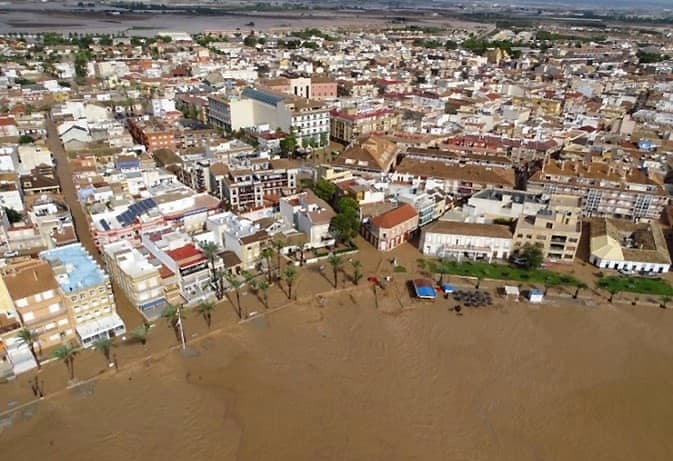
Figure 3. Santa María Flood (2019 cut-off low). Los Alcázares.
Therefore, to take further steps towards adaptation to flood risk and to bring the different self-protection measures to fruition, at the end of 2020 the Ministry for the Ecological Transition and the Demographic Challenge approved the
Royal Decree 1158/2020 of 22 December 2020 on the direct grant of subsidies to develop pilot projects to promote adaptation of buildings, infrastructure, installations, and farms in the cities and towns of Los Alcázares, San Javier, Torre-Pacheco, Cartagena y San Pedro del Pinatar (Murcia) to flood risk [Real Decreto 1158/2020, de 22 de diciembre, por el que se regula la concesión directa de subvenciones para el desarrollo de planes piloto de fomento de la adaptación del riesgo de inundación de las edificaciones, equipamientos e instalaciones o explotaciones existentes en los términos municipales de Los Alcázares, San Javier, Torre-Pacheco, Cartagena y San Pedro del Pinatar (Murcia)].
In all, three million euros will be dispensed, broken down as follows:
- Los Alcázares Town Council: 1,300,000 euros.
- San Javier Town Council: 600,000 euros.
- Torre-Pacheco Town Council: 500,000 euros.
- Cartagena City Council: 400,000 euros.
- San Pedro del Pinatar Town Council: 200,000 euros.
In calculating the breakdown for distributing subsidies to the beneficiaries, the Ministry for the Ecological Transition and the Demographic Challenge considered indemnities paid out by the CCS in the five municipalities, with the grants being proportionate to the damage sustained, in the following percentages:
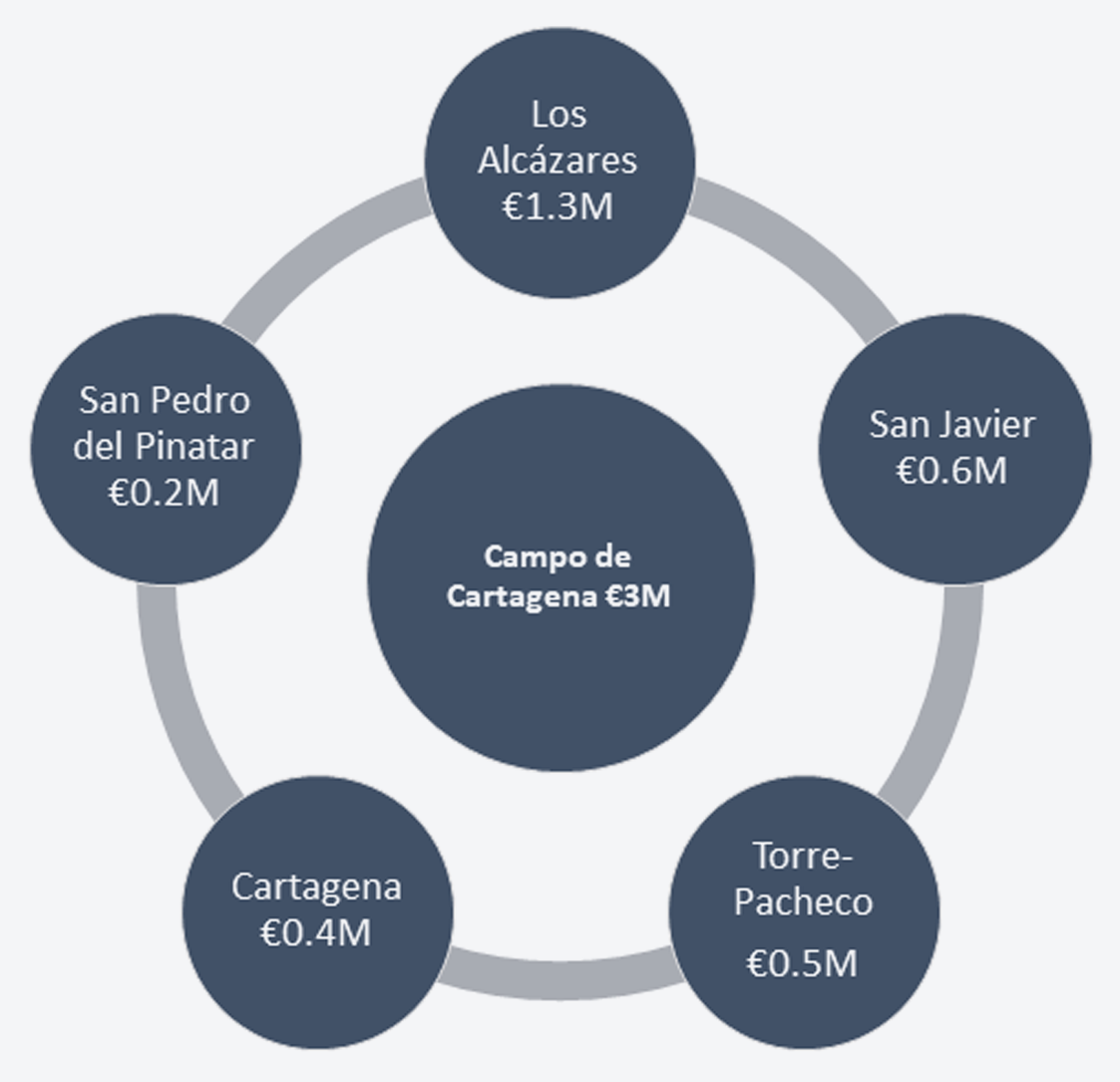
Figure 4. Breakdown of subsidies approved by Royal Decree 1158/2020 of 22 December 2020.
By percentage, 45% to Los Alcázares, 22% to San Javier, 16% to Torre-Pacheco, 13% to Cartagena, and 4% to San Pedro del Pinatar, which accounted for 96% of the indemnities paid out in the Campo de Cartagena county.
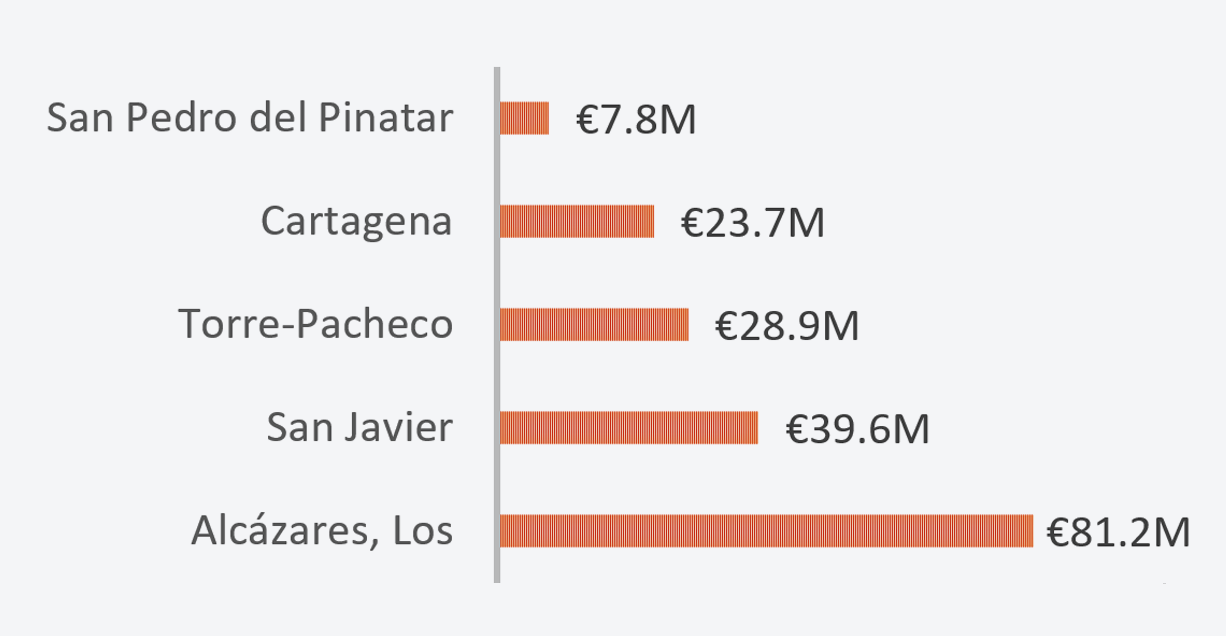
Figure 5. Indemnities paid out by the CCS in 2005-2019.
The measures funded include buying equipment and material, such as temporary or permanent barriers, dewatering pumps, check valves, and other equipment and building work, such as waterproofing or redesigning façades, building or upgrading perimeter walls, protecting or sealing voids (windows, ventilation grilles, installation shafts, etc.), protection or relocation of vulnerable installations (electric panels, boilers, fuel tanks, etc.), and other work that will upgrade the adaptation of existing equipment and buildings to flood risk and increase their resilience.
The Decree envisages distributing the subsidies by beneficiary type by locality, with up to 40% of the total subsidies being awarded for measures for publicly owned buildings and equipment and at least 50% being awarded for measures for privately owned buildings and equipment, with up to 10% of the total subsidies being awarded for hiring technical personnel.
New challenges
A public consultation for a second cycle of flood risk management plans to continue with measures of this type will be held in the coming months.
The priorities of these plans include promoting a suitable risk culture in the public and in the various economic agents and social partners, building awareness, and fostering participation by all the players concerned. This will open up new prospects to continue promoting coordination among all government bodies and developing new and specific programmes for adaptation to flood risk.
Expanding awareness of these types of strategies and carrying out assessments and projects all over the country pursuant to work already under way will make it possible to extend these kinds of measures to other river basin districts in the framework of the programmes envisaged under these new plans.
The success of these measures will depend on the ability of all the government bodies and players concerned to foster the spread of self-protection measures in society. Subsidies for adaptation to flood risk provides a new strategic instrument that can help achieve this goal.




